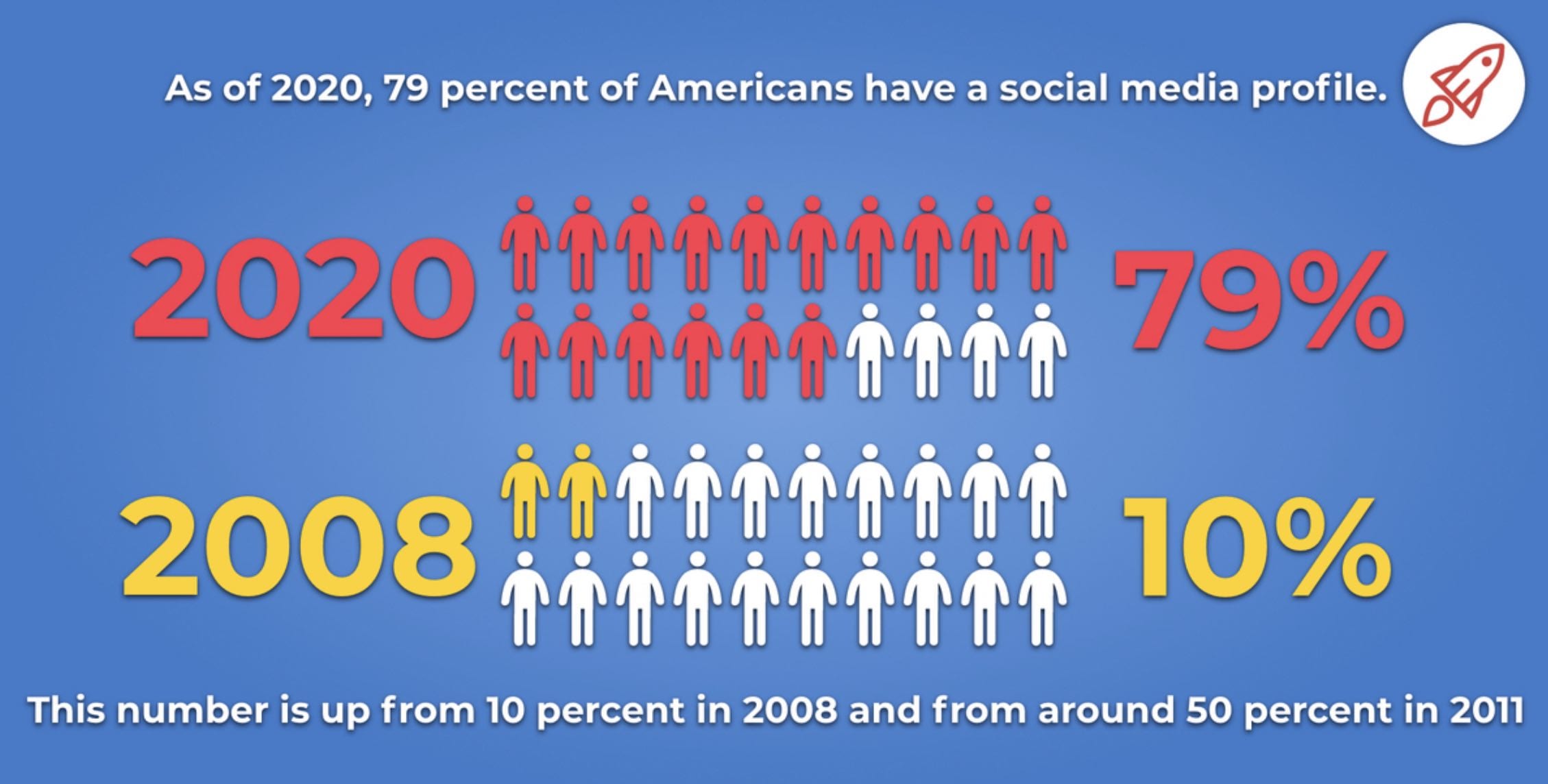Resources

How can a local and small business leverage Facebook to increase brand awareness, market its services or products and get leads?
This article is the kick-off our new series covering Social Marketing. In this series we are going to cover the Big 5: Facebook, Instagram, LinkedIn, Google My Business and Twitter, and how using them for your business is essential.
I have had numerous conversations with Local and Small business owners over the years. Around 95% of them all tell me the same thing from the beginning:
I have heard this line so many times it is hard for me not to laugh anymore when it comes up. I will share with you what I share with them every single time.
There are 328 million people in the United States. 244 million people use social media in the United States.
That is 80% of the population and you want me to believe that your target audience doesn’t use social media. It just isn’t the truth.
Now does this mean that social media will without a shadow of a doubt bring your business leads…no it doesn’t mean that, but it does mean that you can get your brand to your target audience.
Facebook. There are 2.2 billion people that log into Facebook every single month and 1.45 billion people log in every SINGLE DAY. Outside of Google, Facebook is the most used platform on earth.
94% of businesses in the United States have some interaction with Facebook.

So how can a local and small business leverage Facebook to increase brand awareness, market its services or products and get leads? That is what this article is all about.
The first step in understanding this universe is to understand how it operates. Facebook has its own algorithms to determine what content to show and engage its users.
Facebook’s algorithm’s sole purpose is to serve relevant content to its users. It accomplishes this by 4 unique factors:
1. Inventory – The name says it all. Facebook inventories everything within its platform.
2. Signals – There are specific signals for the algorithm to pick up
a. Comments & Likes on a photo
b. Engagement with content by friends
c. Shares on Messenger
d. Replies to video content
e. What profile posted the content
f. The time the content was posted
g. The time it is right now
h. Technology (what phone and how fast your internet connection is)
i. The type of content being posted
j. The average time you spend on similar content
k. Was the post informative
l. How complete the profile is for the person posting the content
3. Predictions – Facebook works to guess what you will interact with based on previous behavior.
4. Score – This is a number that Facebook gives each piece of content based on each individual. Meaning a post can have a different score for my Facebook profile than for your Facebook profile.
As you can see this is one sophisticated algorithm. Can you imagine the mathematical equations that need to be used for this type of algorithm. MASSIVE.
So what does all this mean for your business’ Facebook page?
Let’s break this down.
Inventory – There isn’t much you can do about this. Facebook is going to inventory everything that comes into its system.
Signals – This is where you will have the most control over how Facebook controls your posts.
Signals = engagement. The more engagement you get with your post the higher your post will show on feeds of your target audience.
Meaning you will really need to nail down what your target audience will be interested in and what they will engage with.
The above is generally done by survey of existing clientele. Then formatting your posts to get their engagement.
Predictions – Facebook is going to determine based on profile and engagement of an account what they think will be of interest to a person. There really isn’t anything you can do about this, other than ensuring your posts are targeted at your target audience.
Score – Facebook is all about the user experience. They want the user engaged as much as possible and continue to use the platform. Based on this every single post gets a score based on every single user.
The algorithm is going to pull in data from everything it can determine about the profile and show them posts based on this score.
There is not a way to school the system. If Facebook believes that a profile will be interested in your posts based off this system, then they will show it. If not then it won’t.
Therefore you need to create posts to engage your audience.

Facebook does offer a tool to help you do this. It is called Facebook Audience Insights. It can be found in the Facebook Ads Manager (you don’t have to run an ad to use the tool)
Using Facebook Audience Insights you can filter it based on information you do have about your target audience. Based on this you can get information about this target audience you didn’t have. Such as their interests outside of your business, what type of posts they like, etc.
More information about your target audience will always allow you to create better content that your target audience will interact with.
Long story short. Facebook is built around audience engagement. If your content engages your audience…then you will be rewarded and grow your brand.
Thought has to go into the strategy. It can not be cookie cutter.
We hope you’ve found this article helpful. Follow us on any of our social media accounts or subscribe to our blog to continue to get helpful tips such as this one.